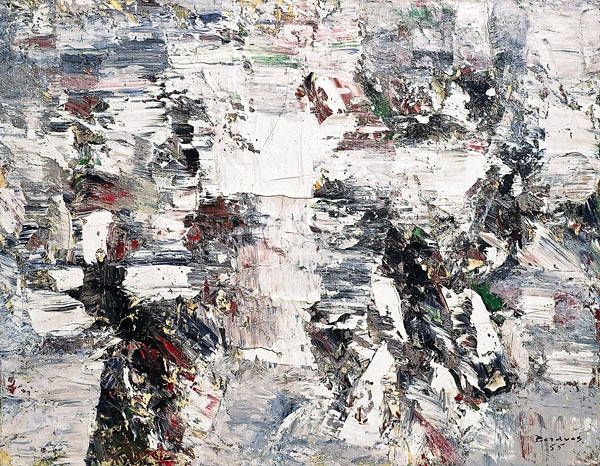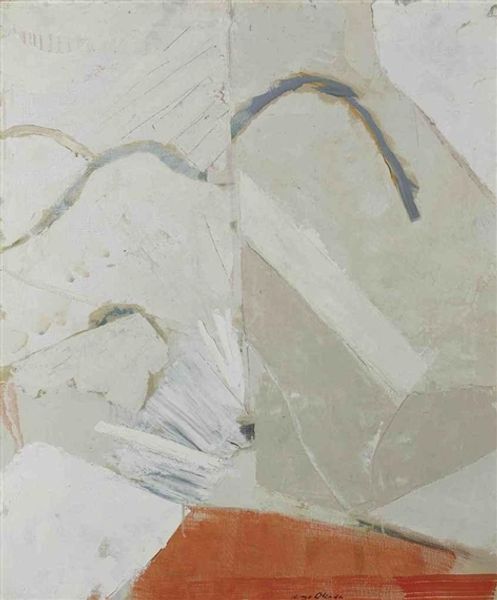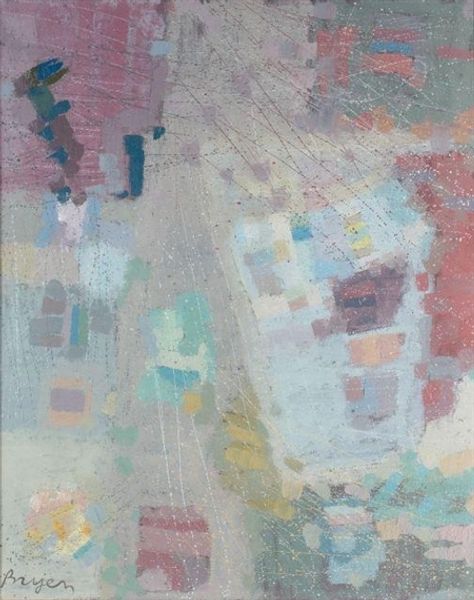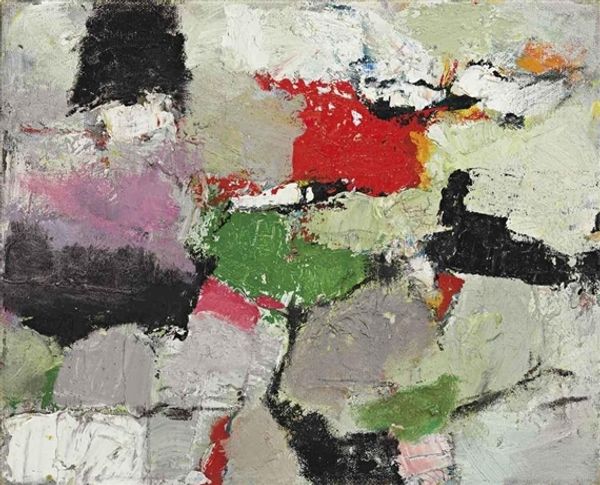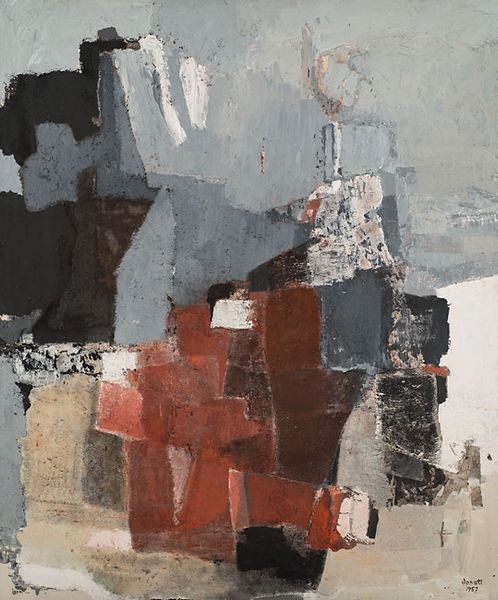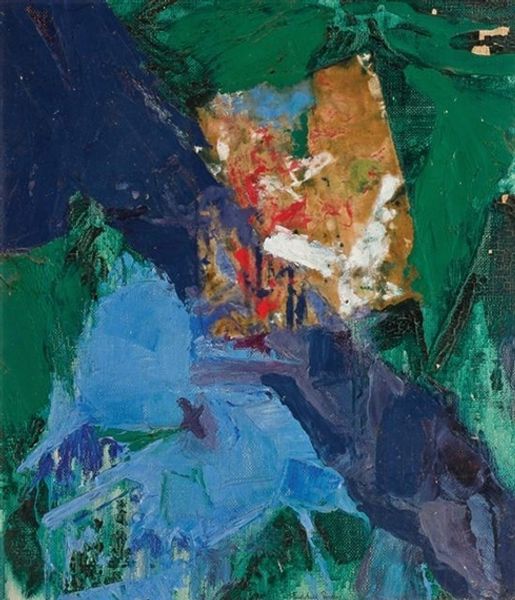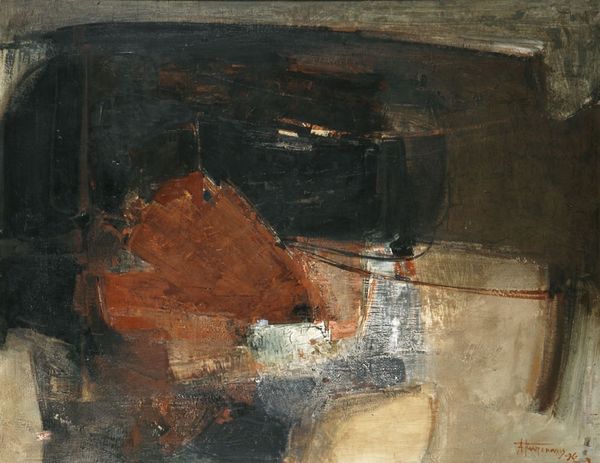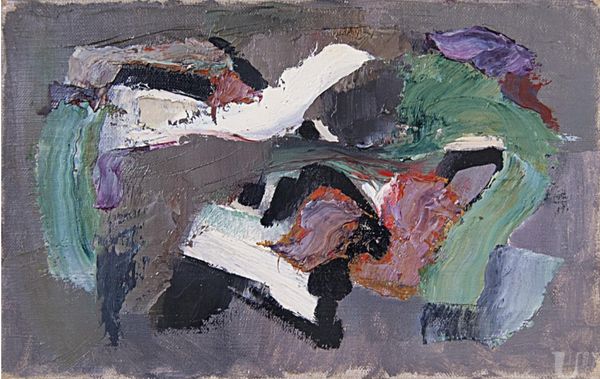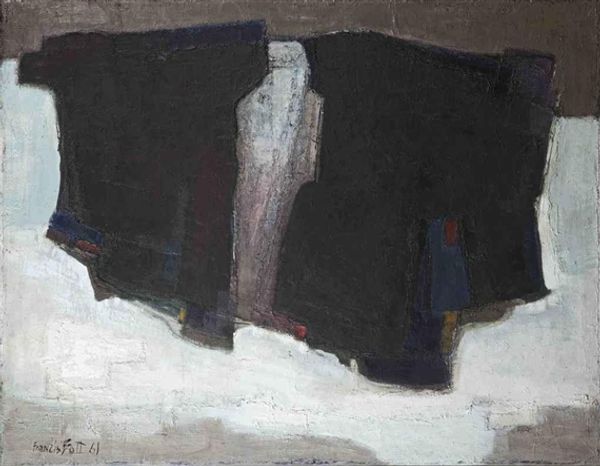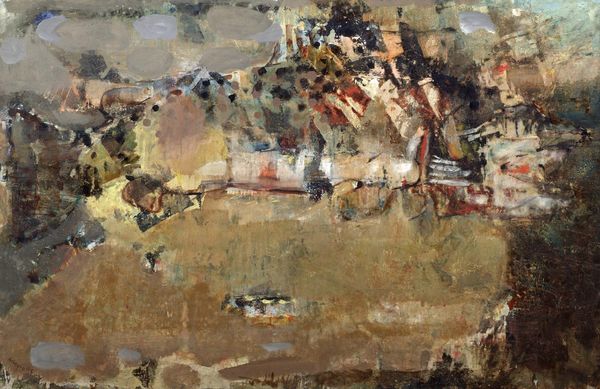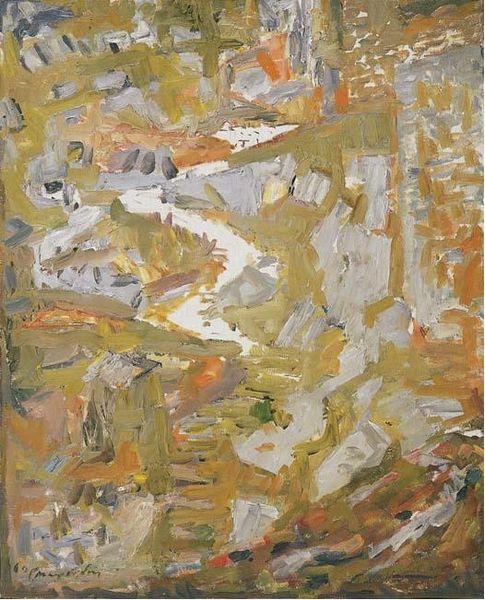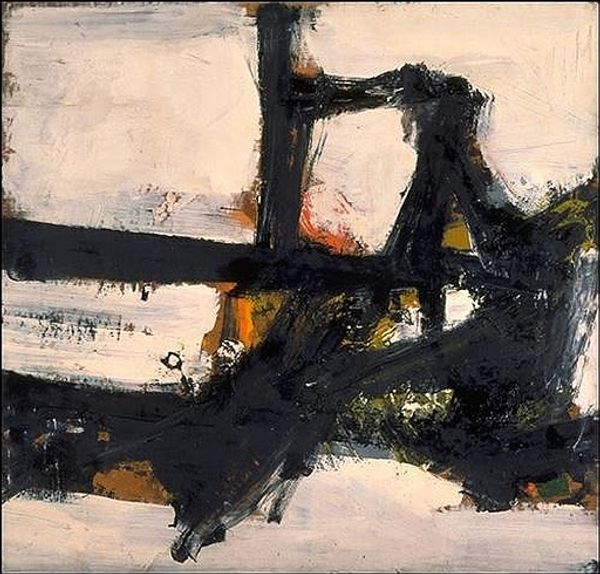
oil-paint, impasto
#
abstract-expressionism
#
abstract expressionism
#
oil-paint
#
landscape
#
oil painting
#
impasto
#
abstraction
Copyright: Eugene Leroy,Fair Use
Curator: Here we have an "Untitled" work by Eugene Leroy, completed in 1948. He primarily worked with oil paint, and his famous impasto technique is on full display here. What strikes you initially? Editor: The texture. The sheer build-up of paint gives it such a tactile quality. It almost feels like I could reach out and sculpt the canvas myself. It subverts, in a way, our expectation of a 2D piece. What context do you think informs the viewer? Curator: Looking at its production in 1948, it is easy to think of this as within the trajectory of Abstract Expressionism, but Leroy never aligned himself with the New York school, maintaining a fierce independence throughout his career. While many were striving to flatten the picture plane, Leroy seemed determined to add physical layers. He really challenges the concept of "value" both in a material sense of adding volume, but also the value we assign "high" art production that emphasizes skill. Editor: So, how does this radical departure from flatness intersect with post-war anxieties and societal upheaval? Does the density of the paint speak to a kind of hoarding in a period of scarcity, or a deliberate disruption of conventional notions of painting? Curator: Interesting point about the potential for reading material anxiety, but consider the labor required. It wasn't necessarily about hoarding material; each layer demanded immense labor. I am compelled by thinking about what art Leroy looked at to create this material process of "application" - that he isn't starting with flatness in order to challenge a formal tradition in painting; in the way a Greenbergian mode dictates for its American context, it comes out of the Symbolist and Post-Impressionist painting, that emphasized process of making through the materiality, as the content. He almost seems to be re-presenting their mode. Editor: Okay, I appreciate the grounding, though it complicates a purely materialist reading. Considering post-war Europe, however, the layers of paint can become a metaphor. Each application representing buried memories or attempts to rebuild identity. It feels deeply melancholic. It prompts reflection, for sure. Curator: Yes, the density holds trauma but through that engagement of manual labor and the process and re-presentation that is always one of painting, a material engagement takes it past any psychoanalytical meaning to something altogether different. Editor: It is thought-provoking for how it compels the viewer to ask questions about surface and depth in both art and ourselves. Curator: Precisely. Its radical materiality demands engagement on multiple levels, shifting definitions of what we consider skillful and meaningful production.
Comments
No comments
Be the first to comment and join the conversation on the ultimate creative platform.
